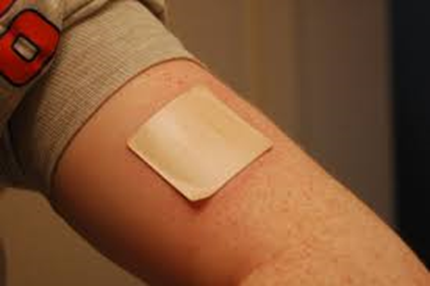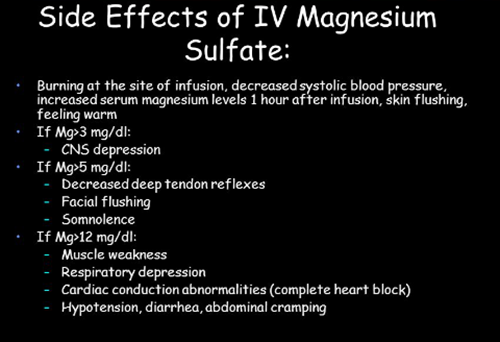A nurse is providing teaching to a client who wants to stop smoking and has purchased a transdermal smoking patch. Which of the following information should the nurse provide?
Rotate the application site every week.
The transdermal patch can cause insomnia.
Leave the patch in place fe8 hr each day.
The transdermal patch releases nicotine rapidly into the bloodstream
The Correct Answer is A
Choice A Reason:
Rotate the application site every week is correct. Rotating the application site is essential to prevent skin irritation or sensitization. Advising the client to apply the patch to a different area of clean, dry, non-hairy skin each time helps reduce the risk of skin irritation at the application site.
Choice B Reason:
The transdermal patch can cause insomnia is incorrect. Insomnia is a potential side effect of nicotine replacement therapy (NRT) patches, including transdermal nicotine patches, but it's not a universal side effect for everyone using the patch.
Choice C Reason:
Leave the patch in place for 8 hr. each day is incorrect. Transdermal nicotine patches are typically worn for 16–24 hours each day, depending on the specific product instructions. Leaving the patch on for a shorter duration might reduce its effectiveness in supporting smoking cessation.
Choice D Reason:
The transdermal patch releases nicotine rapidly into the bloodstream is incorrect. Transdermal nicotine patches deliver nicotine slowly through the skin into the bloodstream over an extended period rather than providing a rapid release. This gradual release helps reduce cravings and withdrawal symptoms associated with smoking cessation.

Nursing Test Bank
Naxlex Comprehensive Predictor Exams
Related Questions
Correct Answer is ["60"]
Explanation
Step 1: Determine the Lidocaine Concentration
- The solution contains 2 grams (2000 mg) of lidocaine in 500 mL.
- To find the amount of lidocaine per mL:
2000 mg ÷ 500 mL = 4 mg/mL
Step 2: Calculate the Total Dose per Hour
- The prescribed infusion rate is 4 mg per minute.
- In 1 hour (60 minutes), the total dose is:
4 mg/min × 60 min = 240 mg/hr
Step 3: Determine the Infusion Rate in mL/hr
- Since each mL contains 4 mg of lidocaine:
240 mg ÷ 4 mg/mL = 60 mL/hr
The nurse should set the IV pump to 60 mL/hr for the continuous IV infusion of lidocaine at a rate of 4 mg/min.
Correct Answer is ["A","C"]
Explanation
Choice A Reason:
Absence of deep-tendon reflexes is correct. The absence or decrease in deep-tendon reflexes can be a sign of magnesium toxicity. Magnesium sulfate, when given in excessive amounts or in the case of accumulation due to impaired renal function, can lead to muscle weakness, hyporeflexia, and in severe cases, loss of deep-tendon reflexes. Discontinuation of magnesium sulfate and administration of calcium gluconate is warranted in severe cases of magnesium toxicity to counteract its effects.
Choice B Reason:
Report of chills is incorrect. Chills are non-specific symptoms and are not typically associated specifically with magnesium toxicity. They are less indicative of a need for calcium gluconate administration in the context of magnesium sulfate infusion.
Choice C Reason:
Decreased level of consciousness is correct. Severe magnesium toxicity can affect the central nervous system, leading to symptoms like confusion, drowsiness, and eventually decreased level of consciousness. In these cases, discontinuation of magnesium sulfate and administration of calcium gluconate is crucial to counteract the effects of excessive magnesium.
Choice D Reason:
Systolic blood pressure of 130 mm Hg is incorrect. A systolic blood pressure of 130 mm Hg, by itself, is not an indicator of magnesium toxicity that necessitates the administration of calcium gluconate. Blood pressure within this range is not typically a cause for concern related to magnesium sulfate administration.
Choice EReason:
Urine output of 80 mL in 4 hours is incorrect. While decreased urine output might indicate potential renal issues or compromised kidney function, it's not a specific indication for the administration of calcium gluconate in the context of magnesium sulfate infusion. It can signal the need for further assessment but is not a direct sign of magnesium toxicity requiring calcium gluconate administration.

Whether you are a student looking to ace your exams or a practicing nurse seeking to enhance your expertise , our nursing education contents will empower you with the confidence and competence to make a difference in the lives of patients and become a respected leader in the healthcare field.
Visit Naxlex, invest in your future and unlock endless possibilities with our unparalleled nursing education contents today
Report Wrong Answer on the Current Question
Do you disagree with the answer? If yes, what is your expected answer? Explain.
Kindly be descriptive with the issue you are facing.
